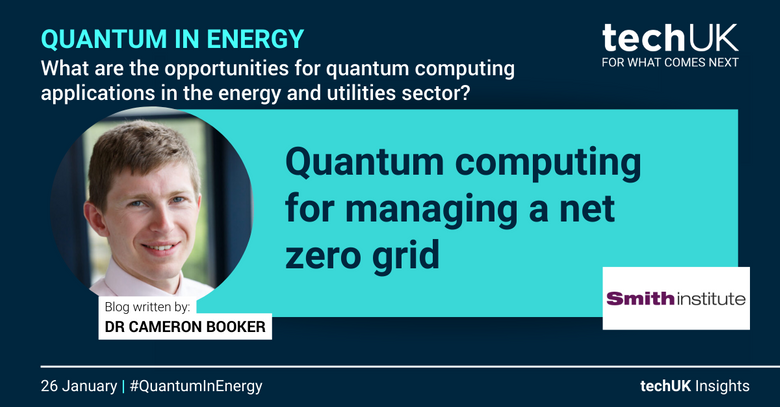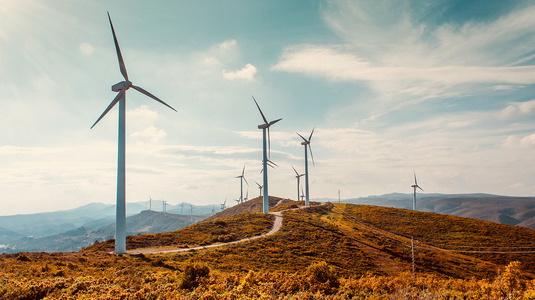Quantum computing for managing a net zero grid (Guest blog by Smith Institute)

The global transition towards a net zero future is one of the most important challenges humanity has ever faced. There are many obstacles in our way, and it is the responsibility of every industry to do what it can to overcome them. Of these obstacles, one towers above many others: efficiently balancing an electricity network which has a high dependence on renewable energy. Quantum computing may hold the answer.
When most of our power was produced by a handful of large fossil-fuel power stations, balancing electricity networks – making sure supply matches demand – involved ramping up or down the power that these few generators were producing. Mathematically, balancing the network for the lowest cost is modelled as a so-called MIP (mixed integer programme), an NP-hard problem. NP-hard problems are tough to solve, usually because the space of possible answers balloons exponentially as you introduce new variables – in this case, more generators. Nevertheless, the balancing problem was straightforward enough to solve because there weren’t many generators.
But in the net zero world we are striving for, much of our energy will be produced by millions of small generators - from wind and solar farms to solar panels on your rooftop. Each of these must be turned on or off individually. This dramatically increases the scale of the problem, making the computation time skyrocket. We have been aware of the growing complexity of integrating renewable energy into the balancing mechanism for some time. The problem is only going to get worse, and likely exponentially so.
The possible saviour could be quantum computers. This type of optimisation problem, one where devices are turned on or off, is particularly well suited to quantum computers using an algorithm called the quantum approximate optimisation algorithm, or QAOA. The key idea behind QAOA is to encode the problem as if it were a set of quantum particles that represent the variables we need to solve for, in this case whether each generator should be on or off. By carefully manipulating these mock particles within a quantum physical simulation, they can be coaxed into the lowest energy configuration, called the ground state. If the problem has been encoded correctly, then this ground state exactly corresponds to the best solution to the optimisation problem.
QAOA is already showing some promise on toy examples. As the performance of quantum hardware improves, we hope to harness the full power of QAOA not only for grid balancing but also for other large optimisation problems such as scheduling. Even better, with advancements in quantum-inspired techniques such as annealing and p-bits, we may have alternative routes to outperforming classical computers before fully fault tolerant quantum hardware is available.
It is important to also recognise that in the net zero future, we will not be able to rely exclusively on today’s forms of renewable energy for all our power demands. We need to continue investing in other new forms of green energy and supporting technology such as batteries. The most promising candidate is viewed by many to be nuclear fusion. Despite significant advancements after over 70 years controlling fusion, capturing its energy still eludes us.
At the heart of the struggle towards fusion are the incredibly computationally expensive magneto-hydrodynamic calculations that need to be performed. Here too there is hope that quantum computing can come to our rescue. Recent developments have suggested that large-scale quantum computers may be just what we need to understand the physics at play in fusion - and to design the reactors that will provide abundant, clean energy for generations to come.
Get involved with our work
All of techUK’s work is led by our members – keep in touch or get involved with our work on transport and infrastructure by joining our groups.




